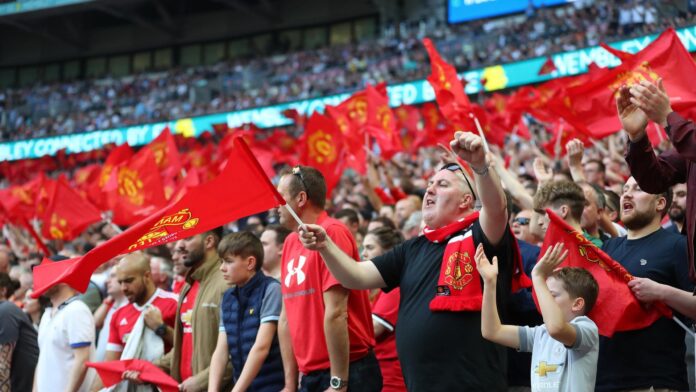Most people can name a club they follow without pause. The choice may have been casual at first, yet it often lasts for decades. Even when results are poor, support stays. At times this loyalty seems irrational, but it follows a clear psychological pattern that links identity, memory, and social life.
In the modern sports world, fans move between live broadcasts, short clips, and second-screen activity, and some follow scores and odds through sites such as https://parimatch.cl/football/live/1, yet behind all this sits a simple fact: the team comes first. The club becomes a stable reference point in a changing media landscape. To understand why people hold to one shirt for life, we need to look at how that bond forms and why it resists change.
Early influences and family scripts

Loyalty often begins before a person can explain it. Many fans grow up in homes where a certain club is taken for granted. Scarves on the wall, weekend routines, and stories about past seasons send a message: “This is our team.” Children absorb this long before they understand tactics or league tables.
Psychologists sometimes speak of “family scripts” as repeated stories and roles that give people a sense of place. Supporting one club is one of these scripts. A child may not reach an explicit decision; instead, support is part of family belonging.
To cheer for a rival club can feel like a small act of betrayal, even if nobody says this aloud. In this way, loyalty is not just about sport; it is about staying in line with the group that raised you.
Over time, this early tie blends with personal choice. A teenager might consider switching allegiance, but the cost feels high. The club is now linked with memories of a parent, grandparent, or sibling. Keeping the same team maintains that link.
Identity and the need for belonging
People seek groups that make them feel they belong. A club offers a ready-made identity. By saying “we,” fans share a sense of collective self, even if they have never met most fellow supporters. Colors, chants, and slogans become symbols of that identity.
This group belongs to a wider map of “us” and “them.” Loyalty is not only about love for the team; it is also about rivalry with others. The presence of rival clubs sharpens group boundaries.
Matches are not just games but events where identities clash. Even when the stakes in the league are low, the result of a local derby can matter more to fans than a neutral observer would expect.
Belonging to a club also helps people navigate other parts of life. In a new city, wearing a familiar scarf can invite conversation. Online forums and chats extend this sense of community. For many, the club becomes one of the few stable groups they can count on, especially when other parts of life feel uncertain.
Emotion, memory, and key moments

Loyalty is reinforced by emotion. Major wins, painful defeats, last-minute goals—these events leave deep marks. Strong emotion improves memory. Fans remember where they were when the team lifted a trophy or when a goal kept the club from relegation. These memories tie the club to an entire period of life.
What matters is not just the event itself but the context. A fan who watched a key match with a close friend or relative may recall not only the score but the shared experience. The club becomes a container for these memories. Changing teams would mean cutting loose a set of moments that feel central to self-history.
Even routine matches build this archive. The walk to the stadium, the smell of food stalls, the sound of the crowd: all of these details create a multi-sensory record. Over the years, the club becomes a thread that runs through many stages of life, from childhood to adulthood and beyond.
Social norms and pressure
Once a person is known as a fan of a club, others expect consistency. Co-workers, friends, and relatives may tease or challenge them when results are poor, but the role remains stable. To switch clubs in midlife often draws criticism. People may see it as disloyal or opportunistic, especially if the new team is more successful.
This social pressure reinforces loyalty. Even if a fan feels frustrated with the club’s leadership or results, they know that dropping support would change how others see them. The cost of switching is not just private; it is public. In this way, social norms lock in early choices.
At the same time, these norms create a sense of honor. Sticking with a club in hard times is praised. Fans learn to value endurance and patience. In a culture where many things change quickly, holding on to one team becomes a small act of stability.
Identity protection and cognitive bias

Psychology offers another piece of the puzzle: people tend to defend beliefs and choices that form part of their identity. When a club loses, fans may blame referees, injuries, or luck rather than question their support. This is a form of bias that protects self-image. It is easier to believe that the team was unlucky than to accept that the club is weak.
Fans also notice and remember events that confirm their positive view of the team. A surprise win or strong performance stands out more than an average defeat. Over time, this selective memory builds a narrative in which the club is worthy of loyalty, even if the overall record is mixed.
Such biases are often seen as flaws, but they also help maintain a stable sense of self. If fans were completely neutral analysts, loyalty might fade whenever the team’s performance dropped. Instead, these mental habits cushion emotional swings and keep the bond intact.
Modern mobility and new forms of loyalty
Today, people move more often between cities and countries. Many fans now follow clubs they have never seen in person. Some choose teams based on a favorite player, style of play, or personal story rather than family tradition.
Yet even in this more fluid world, the pattern of loyalty looks similar. Once a person has invested time, emotion, and social identity in a club, the same mechanisms apply. They seek out fellow fans online, build memories around key matches, and resist switching even when another team seems more successful.
What changes is the medium. Instead of the local stadium, the main meeting point may be a chat group or streaming platform. Still, the psychological need for belonging, identity, and continuity remains the same.
Conclusion: a stable thread in a moving world
Supporting one club for life may look irrational from a distance, especially when the team loses often. But from inside the fan’s mind, loyalty serves several functions. It anchors identity, preserves memories, and connects a person to others in a clear and simple way.
Family scripts start the process, social norms keep it in place, and cognitive biases help protect it from constant doubt. In a world where jobs, homes, and even personal interests can change at speed, a club offers a stable thread. The colors, chants, and match days form a pattern that runs through the years. That is why many people will keep saying “our team” long after players, managers, and even stadiums have changed.






